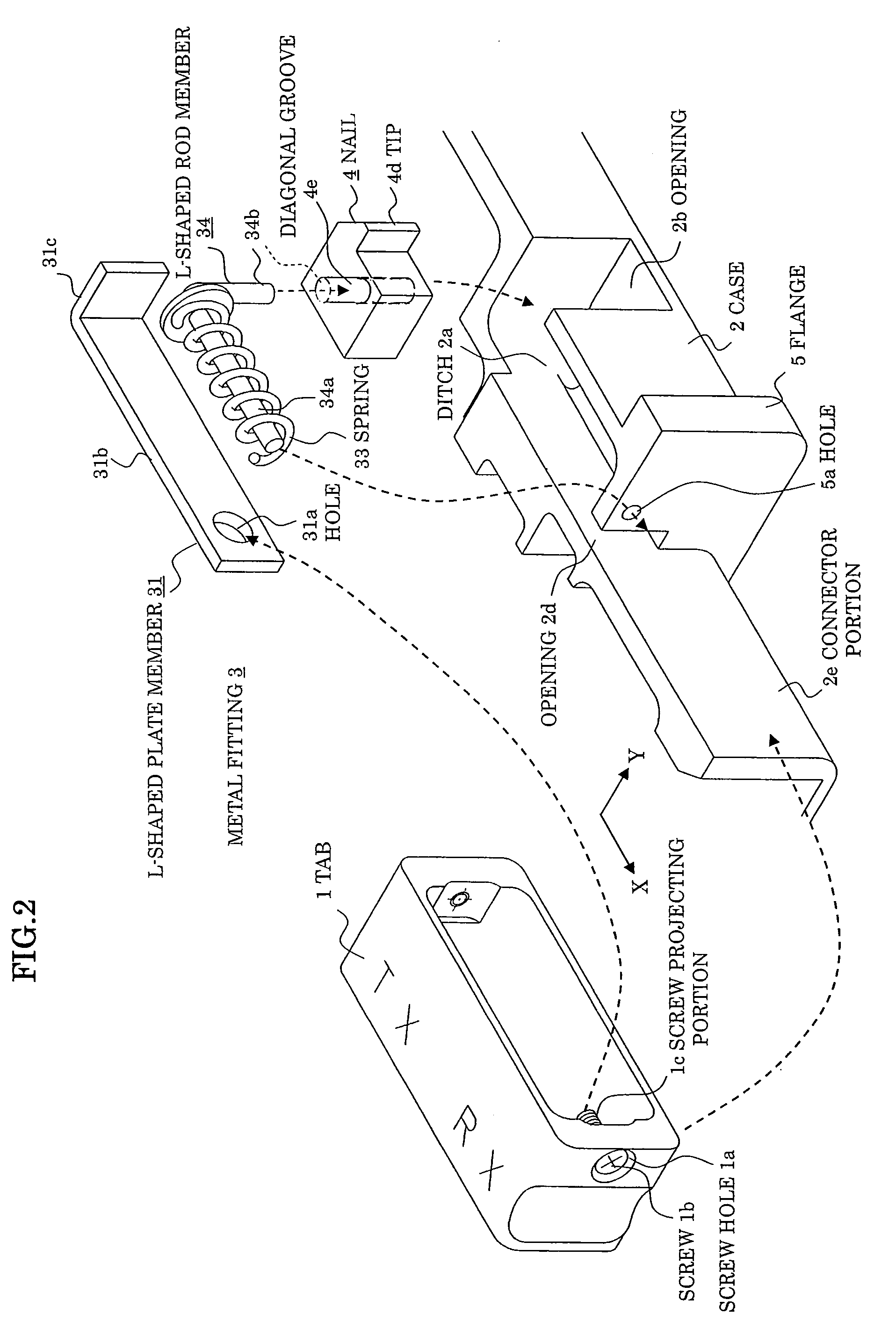Module
a module and module technology, applied in the field of modules, can solve the problems of displacement of nails, insufficient stroke or displacement of nails, disassembly of latches with mounting devices, etc., and achieve the effects of reducing the number of parts, facilitating assembly, and reducing the friction between the case and the metal fitting
- Summary
- Abstract
- Description
- Claims
- Application Information
AI Technical Summary
Benefits of technology
Problems solved by technology
Method used
Image
Examples
embodiment (
4)
[0081]FIG. 4 shows an embodiment (4) of a module according to the present invention, which is different from the above-noted embodiments (1)–(3) in that the metallic fitting 3 only employs a leaf spring 37 that is one member. Namely, this metallic fitting 3 is composed of a bended portion 37b in a mild R-shape having a hole 37a loosely engaging the screw projecting portion 1c, an L-shaped portion 37b, and a coupling portion 37c for coupling the bended portion 37b and the L-shaped portion 37d where the leaf spring 37 is folded at a near center by 150–170°. The L-shaped portion 37d is inserted into a space between the pin 2f provided in the ditch 2a, the flange 5, and the case 2 to fix the leaf string 47. In the same manner as the first portion 36a of a leaf string 36 in the above-embodiment (3), the coupling portion 37c engages with a pin 4a provided in the nail 4.
[0082]The operation of the latching structure thus assembled will now be described referring to FIGS. 5A and 5B.
[0083]F...
PUM
 Login to View More
Login to View More Abstract
Description
Claims
Application Information
 Login to View More
Login to View More - R&D
- Intellectual Property
- Life Sciences
- Materials
- Tech Scout
- Unparalleled Data Quality
- Higher Quality Content
- 60% Fewer Hallucinations
Browse by: Latest US Patents, China's latest patents, Technical Efficacy Thesaurus, Application Domain, Technology Topic, Popular Technical Reports.
© 2025 PatSnap. All rights reserved.Legal|Privacy policy|Modern Slavery Act Transparency Statement|Sitemap|About US| Contact US: help@patsnap.com



